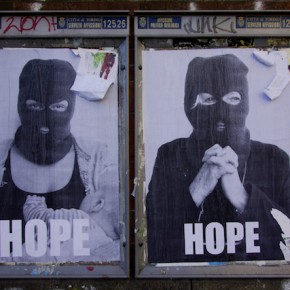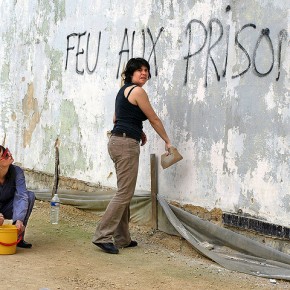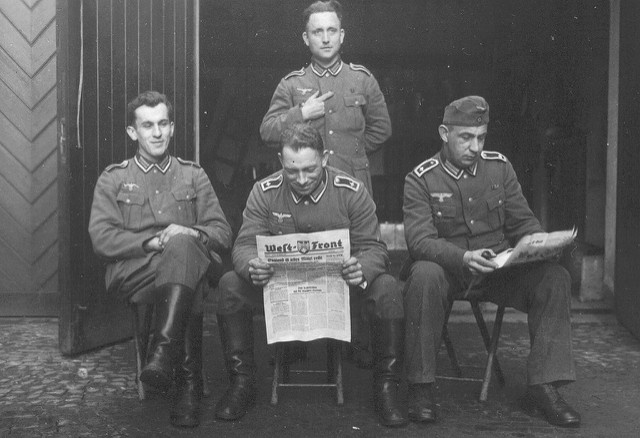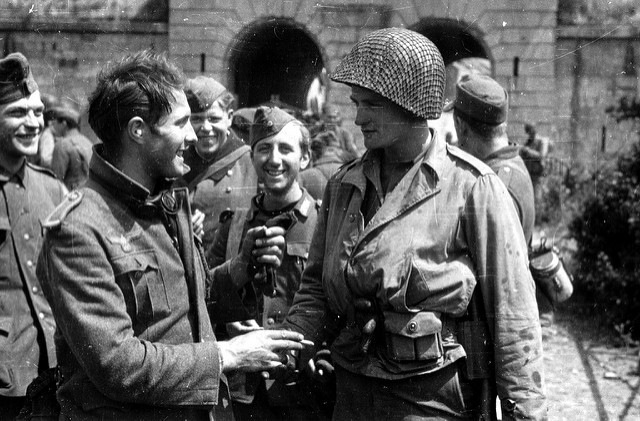In the Lonely Planet guide to Croatia, the Sibinek-Knin county of Dalmatia is called “underrated.” Hundreds of thousands of tourists flock to the coastal cities of Split, Dubrovnik, and the dozens of nearby islands each summer. Only a fraction make it anywhere inland, where only Krka park’s waterfalls and the nearby Serbian Orthodox Monastery are recommended.
Nowhere mentioned in the guide are the ancient Roman Nymphium of Bribir, the towering anti-fascist monument of Kistanje, or Mostine’s “Apache Village.” Even the titular city of Knin has no mention—it hasn’t even earned a page on the exhaustive backpacker site Wikitravel. This is likely because it was the capital of the breakaway Serbian Republic of Krajina, and to this day, the region retains the deep scars of the war and its aftermath.
The closest town mentioned is Skadrin, a Croatian port town that was once the front-line of the conflict and today serves as a stop-off point before tourists go to Krka. Somehow, during what I planned as a routine fun-in-the-sun trip holiday to the Dalmatian Coast, I found myself at Skadrin’s abandoned Serbian Orthodox cathedral, the dark emptiness beyond its decades-shut gates an omen of the devastation to come as my eccentric Croatian guide, Viktor, and I voyaged farther from the coast.
VIKTOR
When planning my trip to Croatia, I messaged friends of friends and comrades of comrades for places to go and people to meet. Viktor’s Facebook profile was sent to me by at least 3 different people as a contact for Zagreb. As it turned out, he had recently moved to Sibinek, a post-industrial city on the Dalmatian coast between Zadar and Split. After WWII, his family moved out of their centuries-old brick and mortar home to move to a new socialist residential complex. The building was long abandoned, and earlier this year Viktor claimed it.
Even though he was new in town, it’s hard to imagine him living anywhere else. He knew all the punks who drank in the square near his house. Unemployed, he stopped-by businesses around town to chat with bored and attractive receptionists. Each day he borrowed a student ID from a friend to buy 1.20€ meal. The day he picked me up, it was squid risotto.
“This squid is not from the Adriatic,” was his only review of the pinkish-grey dish.
As we entered the narrow alleyway towards his home we were greeted by an overjoyed stray dog. “Luka!” he cried. “Dobra Stene!” He roughly petted the filthy mutt, who responded by wheezing and pressing the side of his head against Viktor’s crotch.

“Is this your dog?” I asked, hoping my deadpan irony would translate.
But to my surprise he answered “Yes!” And then, “Well, he’s everyone’s dog. He’s lived on the streets of Sibinek his whole life. People say he’s 18, but no one knows. Generations of punks have taken care of him, but a week after I got here, he ended up in…” he searched for a term, “dog prison?”
“The pound,” I answered.
“Right. If it wasn’t for me taking him in, they would have executed him.”
Luka followed us into the house, where he curled up on a blanket and slept immediately. Viktor’s room was predictably maniacal. His kitchen, desk, and bed were all within one long stride from each other, as was his half bathroom, containing a medium-size bucket, sponge, and a toilet slanted to fit beneath the incline of the stairs above.
“As I told you there’s no shower—“
“That’s okay,” I said, recalling our brief Facebook conversation. “I can just go to the beach.”
He tapped his beard nervously. “Well that is also a problem, because they haven’t turned on the showers at the beach yet, but…” and the tangled gears in his brain began to whiz. Unlike my own neurosis, which always propelled my thoughts hours or days ahead, Viktor’s fastened him to every moment. How he had not figured out the shower situation up to this point was beyond me, but I also knew he would figure it out within a matter of moments. Ten minutes late Luka and I were in his 25 year old white Yugo and headed to a beach outside of town where “the showers will definitely work.”
True to his word, the showers provided a generous burst of chilly water; however the beach part was a bit of an exaggeration. It was more of a concrete swimming pool leading into anemone-infested sea water.
“This place is really ugly, but there is a certain charm to it…” he said, defending his decision to take me to the abandoned spot. “The industry in this area ruined all the beaches in the town, so this area was built for the workers during socialism.” Its utilitarian plainness allowed Viktor to fantasize about simpler Dalmatian times.
“My whole life I’ve been an anarchist, and I guess I still am. But Yugoslavia was a worker’s paradise compared to what we have now,” he said, as we watched Luka dive off the pier after a pine cone. He was the only one of us that ended up swimming.

Viktor showed me the rest of his house when we returned to Sibinek. The other two floors had shockingly large rooms, and even a nicely sized bathroom that was not yet functional. I urged him to fix the place up and rent it out as a bed n’ breakfast, a quick solution to his financial woes. He merely lodged the idea away somewhere, still unsure of how to install the shower.
Internet was another issue. The town offers free WIFI, but we had to walk to a special place to get—an upturned boat on the port that I thought of as Viktor’s “office.” We sat there clicking away, drinking half-liter Ozujskos and occasionally watching the sunset as Luka frolicked around drunk fishermen who likely knew him as a puppy. Finally, like an annoyed café owner, the town cut us off after an hour of internet, and we discussed our plans for the next day.
“There’s a really nice island nearby, it’s got an okay beach. The water should be warmer than here.” He paused as an argument raged in his head. “Yeah, but it’s 25 Kuna each way… it’s ridiculous, under socialism it would be 5, even less!”
“That sounds okay…” I said, calculating 25 Kuna to be about $5.
“Another option is we can take a drive to these old Serbian towns that were destroyed during the war! Krka park is also there so we can see that. And there’s some anti-fascist monuments I still haven’t seen.”
“That sounds fine too…” I said.
I was honestly enthusiastic about the idea although I was embarrassed to reveal how little I knew about the conflict. Judging from the books around Viktor’s room, he was completely obsessed with the Balkan war, especially Croatia’s involvement. One huge volume was a UN report on demographic shifts from month to month. Another contained information for Serbians looking to reclaim and rebuild their destroyed homes. Amongst these were new Croatian translations of Derrida, Rancierre, and Deleuze in new condition that he hadn’t gotten around the read. “I mostly read the books about the war over and over,” he admitted.
TO THE FRONTIER
There wasn’t a moment of quiet from the moment the tin-can door of the Yugo clanked shut. Luka curled up in the backseat, his foul-smelling mobile doghouse, and as we left the city limits Viktor began his Iliadic version of Yugoslavia’s dissolution and the war crimes that followed.
He began with the breakaway Republic of Serbian Krajina, based in Knin. It was there a local dentist had convinced the police to disobey orders from the recently independent Croatian state. He told them Croatia’s new President, Franjo Tudjman, heralded the return of the Nazi Ustashe party, and that oppression of Serbs would soon follow. In backdoor deals, Yugoslavian premier Slobodan Milosevic coordinated the Serbian separatists with local oligarchs in order to carve-out land for a “greater Serbia” that would extend through Bosnia to the Adriatic once Yugoslavia inevitably fell. The Serbian-majority towns blocked roads with logs, refused orders from the Croatian state, fired on Croatian helicopters invading their airspace, and began forcing the Croatian population (about 30-40%) from the region. Including refugees from the breakaway region in Slavonia, there, 250,000 Croatians and other non-Serbs were displaced.
And here was where beach-bum backpackers like me came into the story. Even in Communist times, tourism was Dalmatia’s major industry, and the rapidly degenerating conflict ruined their first season as an independent country. Like the current situation in Cairo, a return to normality was the only way the vital tourist industry would return, and until then the hotels, restaurants, and beachfront trinket shops would be useless as the highways that once connected the coast with Knin.
Before reaching Skadrin, we stopped a memorial just outside of Sibinek. This was a larger version of the placards in the neighborhoods of many Croatian neighborhoods that list the Partisans and civilians that were killed there. Aside from its size, a main difference was the chunks missing from the surface. It had been sprayed with bullets as part of a wave of right-wing reaction after Croatian independence in which monuments were desecrated across the country.
On the upside, there was a surprisingly fresh bouquet of flowers and a candle near the monument’s center. “The Social Democrats do some work to restore and remember these sites,” Viktor explained. “It’s maybe the only good thing they do.”
The streets of Skadrin were attractive and quiet like any small Croatian town. Scars from shells were visible on the buildings, but the town was mostly rebuilt aside from a few abandoned buildings. At the port tourists flocked to busses for Krka, buying shades and sunscreen to prepare for their short hike to the waterfalls. Luka jumped into the water giddily.
Only 5 minutes from Skadrin along the highways once blocked by logs, we reached the still devastated front-line village of Bribir, population 103. Many of the few houses were without roofs, and we saw only a few people milling around, looking at us in passive confusion. We stopped to explore a bombed-out school adorned with a recently-refurbished Yugoslav-era Partisan monument. I snapped a couple of photos on my iPod and Viktor reminded me to send them to him. He asked the same for every subsequent monument.
The school’s structure was still intact and its floors covered in shit from being used to house livestock. Nearly every building in the territory had been burned, and any house we saw with a roof had been remodeled by refugees returning in the last ten years.
We drove up a dirt path to the summit of a nearby hill, one of the few in the mostly flat region. A former Roman complex existed here, and the foundations of the buildings are still visible. Most impressive was the large Nymphaeum complex, once an artificial grotto filled with spring water and blooming with flowers. The remains of a Roman fortress, a 13th century Gothic cathedral with intact gravestones, and a more recent stately Orthodox Church are other sites at this panoramic location. Outside the church is a rare interfaith cemetery, featuring tombs of both Croatians and Serbians, and huge white star where Viktor speculated a socialist monument either once stood or was never completed.
Standing on the star and looking out at the flat country, Viktor shook his head and said, “We’re 15 kms from Skadrin. This area could be a major tourist site.”
This article is the first in a series. Photographs courtesy of Habeebee and the author.
